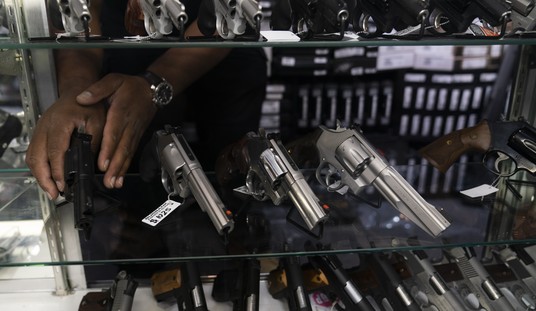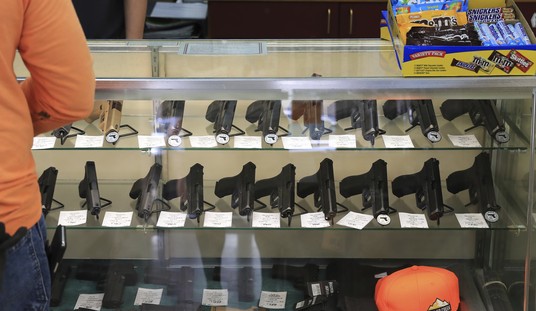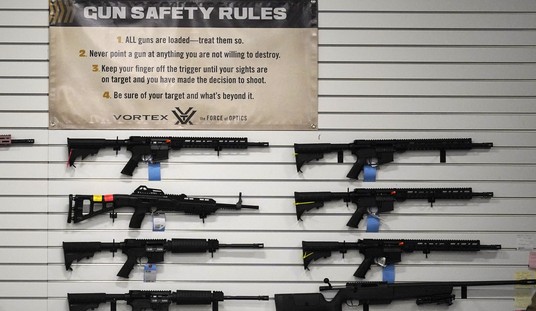This (and last) Week in American Military History
Dec. 30-31, 1968: U.S. Army Special Forces (Green Beret) Sergeant First Class Robert L. Howard is operating deep in the South Vietnamese backcountry (some sources say Cambodia) when suddenly his 40-man hatchet platoon is attacked by a force of some 250 North Vietnamese soldiers.
As the attack unfolds, Howard and his lieutenant are struck by an exploding claymore. Howard is knocked unconscious. He comes to, but with blood in his eyes, he initially believes he has been blinded. Momentarily he can see, but he quickly realizes his body is riddled with shrapnel, his weapon is destroyed, and the enemy is all around him.
Howard manages to toss a grenade at an enemy soldier who is burning the bodies of Howard’s dead comrades with a flamethrower. Howard then crawls under heavy fire to his wounded lieutenant, and drags the officer toward a position of relative safety. Howard survives a second blast when his lieutenant’s ammunition pouch is struck and detonates. Despite his shredded hands, Howard manages to shoot several enemy soldiers with a pistol. He is then shot in the foot and no longer able to walk. Nevertheless, he organizes what’s left of the platoon into a defensive position, then crawls from one man to the next, tending to the wounded and dying, shouting encouragement to the living and fighting, and directing airstrikes on the attacking enemy. Though surrounded, Howard successfully repels attack-after-attack, saves his platoon, and ultimately receives the Medal of Honor.
Retired as a colonel in 1992, Howard is the only soldier to be nominated three times for the Medal of Honor for three separate actions over a period of just over a year.
[AUTHOR’S NOTE: The great Col. Bob Howard passed away, Wednesday, Dec. 23, 2009. In addition to visiting American troops in Iraq, Afghanistan, Germany, Bosnia, Kosovo and elsewhere throughout 2009, he frequently found time to email, often thanking us for our weekly military history updates.]
Jan. 1, 1962: U.S. Navy SEAL Teams “One” and “Two” are established.
Born of the Navy’s Underwater Demolition Teams, America’s SEALs (an acronym for the three realms — SEa, Air, Land — in which SEALs operate) have evolved over the past 48 years to become some of the most respected and feared commandos in the world. Though most of their work is classified, SEALs are involved in almost every operational aspect of the global war on terror.
Jan. 2, 1777: Capitalizing on his successful Christmas night crossing of the Delaware River followed by a pair of victories in two separate battles of Trenton (N.J.), Continental Army Gen. George Washington evacuates — under cover of darkness — his position near Assunpink Creek, and advances on Princeton.
There, within a matter of hours (Jan. 3), Washington clashes with and decisively defeats a British force under Lt. Col. Charles Mawhood in the now-famous battle of Princeton.
During the height of the battle, Washington — at the head of his advancing infantry — reportedly gallops through a thick haze of musket and artillery smoke, shouting: “Parade with me my brave fellows, we will have them soon!”
Jan. 7, 1973: An F-4 Phantom flown by U.S. Air Force Capt. Paul Howman and 1st Lt. Lawrence Kullman shoots down a MiG-21 fighter over North Vietnam, chalking up the final USAF air-to-air kill of the Vietnam War. Five days later, Lieutenants Vic Kovaleski and Jim Wise flying a Navy Phantom splash a MiG-17, making it the Navy’s final air-to-air kill and the last aerial-combat kill of the war.
Jan. 8, 1815: U.S. forces (including soldiers, sailors, Marines, pirates, a few freed slaves, Choctaw Indians, and militiamen from several states) under the command of Maj. Gen. Andrew Jackson defeat a numerically superior British amphibious force under the overall command of Vice Admiral Sir Alexander Cochrane in the Battle of New Orleans (La.).
Though a decisive victory for the Americans, the battle takes place 15 days after the signing of the war-ending Treaty of Ghent. Communications being what they are in 1815, news of the treaty will not reach New Orleans until February.
Jan. 8, 1847: Thirty-two years to the day after Jackson’s victory at New Orleans, a combined U.S. Army-Navy-Marine force under the joint command of Commodore Robert F. Stockton and Gen. Stephen W. Kearny (uncle of the future famous Union Army Gen. Philip Kearny) decisively defeat Mexican forces under the command of Gen. José María Flores in the Battle of San Gabriel, California.
At one point during the fighting, attacking American infantrymen are reportedly heard shouting, “New Orleans! New Orleans!” as a battle-cry tribute to Jackson’s better-known victory. Within days, U.S. troops are in control of Los Angeles.
Jan. 9, 1861: Coastal-artillery batteries — including a four-gun battery manned by cadets under the command of Maj. Peter F. Stevens of the Citadel (the Military College of South Carolina) — open fire on the U.S. commercial paddlesteamer “Star of the West” in Charleston harbor. The shots — considered by some historians to be the first of the American Civil War — repel the Star, forcing the ship to abort its mission of resupplying the besieged U.S. Army garrison at Fort Sumter.
The crew aboard the Star report seeing “a red Palmetto flag” flying above the cadet battery.
That flag — a red version of the blue South Carolina flag — flies today over the parade ground at the Citadel.
AUTHOR’S NOTE: “This Week in American Military History,” appears every week as a feature of HUMAN EVENTS.
Let’s increase awareness of American military tradition and honor America’s greatest heroes by supporting the Medal of Honor Society’s 2010 Convention to be held in Charleston, S.C., Sept. 29 – Oct. 3, 2010 (for more information, click here).








Join the conversation as a VIP Member